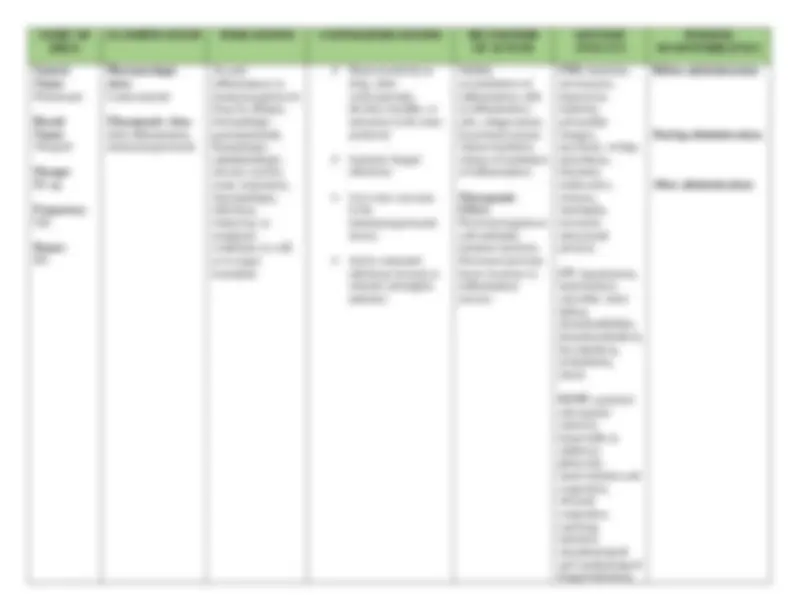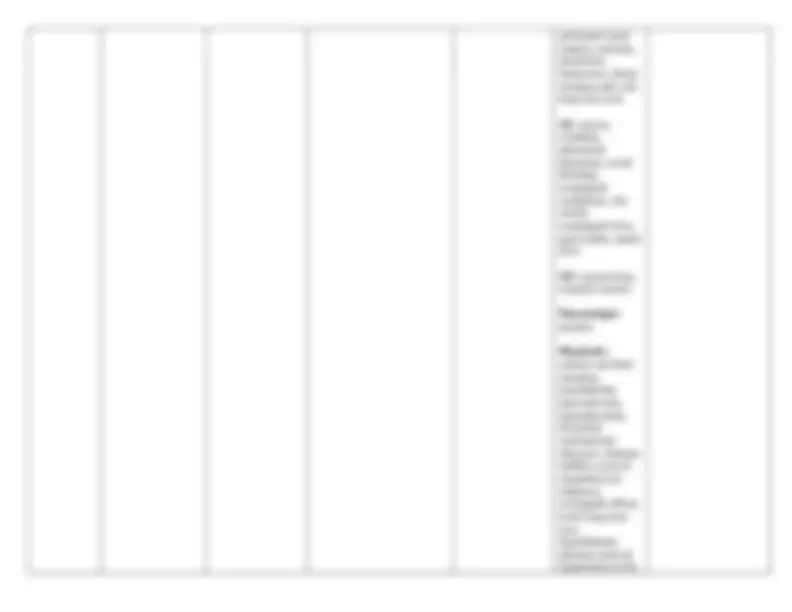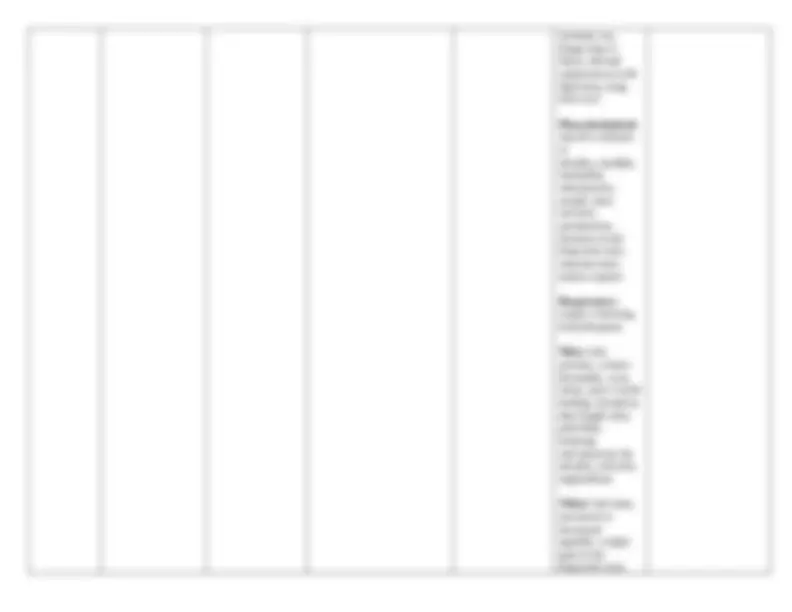





Study with the several resources on Docsity

Earn points by helping other students or get them with a premium plan


Prepare for your exams
Study with the several resources on Docsity

Earn points to download
Earn points by helping other students or get them with a premium plan
Community
Ask the community for help and clear up your study doubts
Discover the best universities in your country according to Docsity users
Free resources
Download our free guides on studying techniques, anxiety management strategies, and thesis advice from Docsity tutors
A comprehensive overview of three medications commonly used in the management of myasthenia gravis and rheumatoid arthritis. It covers the classification, indications, contraindications, mechanism of action, adverse effects, and nursing responsibilities for each drug. The drugs discussed are pyridostigmine bromide, prednisone, and azathioprine. This information can be valuable for healthcare professionals, particularly nurses, who are involved in the care of patients with these conditions. The detailed pharmacological data and clinical considerations presented in the document can aid in understanding the appropriate use and monitoring of these medications to ensure safe and effective treatment.
Typology: Summaries
1 / 7

This page cannot be seen from the preview
Don't miss anything!




Generic Name: Pyridostigmine Bromide Brand Name: Mestinon Dosage: 600 mg Frequency: Q Route: PO Pharmacologic class: Anticholinesterase inhibitor Therapeutic class: Muscle stimulant, antimyathenic Improvement of muscle strength in control of myasthenia gravis, reversal of effects of nondepolarizing neuromuscular blocking agents after surgery Hypersensitivity to pyridostigmine. Mechanical GI/urinary tract obstruction. Prevents destruction of acetylcholine by inhibiting the enzyme acetylcholinesterase, enhancing impulse transmission across myoneural junction. Therapeutic Effect: Produces miosis; increases intestinal, skeletal muscle tone; stimulates salivary, sweat gland secretions. CNS: headache, dysarthria, dysphoria, drowsiness, dizziness, headache, syncope, loss of consciousness, seizures CV: decreased cardiac output leading to hypotension, bradycardia, nodal rhythm, atrioventricular block, cardiac arrest, arrhythmias EENT: diplopia, lacrimation, miosis, spasm of accommodation, conjunctival hyperemia GI: nausea, vomiting, diarrhea, abdominal cramps, increased peristalsis, flatulence dysphagia, increased salivation Before administration: During administration: After administration:
GU: urinary frequency, urgency, or Incontinence Musculoskeletal : muscle weakness, fasciculations, and cramps; joint pain Respiratory: increased pharyngeal and tracheobronchial secretions, dyspnea, central respiratory paralysis, respiratory muscle paralysis, laryngospasm, bronchospasm, bronchiolar constriction Skin: diaphoresis, flushing, rash, urticaria Other: thrombophlebitis at I.V. site, cholinergic crisis, anaphylaxis
perforated nasal septum, anosmia, dysphonia, hoarseness, throat irritation (all with long term use) GI: nausea, vomiting, abdominal distention, rectal bleeding, esophageal candidiasis, dry mouth, esophageal ulcer, pancreatitis, peptic ulcer GU: amenorrhea, irregular menses Hematologic: purpura Metabolic: sodium and fluid retention, hypokalemia, hypocalcemia, hyperglycemia, decreased carbohydrate tolerance, diabetes mellitus, growth retardation (in children), cushingoid effects (with long-term use), hypothalamic pituitary-adrenal suppression (with
systemic use longer than 5 days), adrenal suppression (with high-dose, long term use) Musculoskeletal: muscle weakness or atrophy, myalgia, myopathy, osteoporosis, aseptic joint necrosis, spontaneous fractures (with long-term use), osteonecrosis, tendon rupture Respiratory: cough, wheezing, bronchospasm Skin: rash, pruritus, contact dermatitis, acne, striae, poor wound healing, hirsutism, thin fragile skin, petechiae, bruising, subcutaneous fat atrophy, urticaria, angioedema Other: bad taste, increased or decreased appetite, weight gain (with long-term use),
Generic Name: Azathioprine Brand Name: Imuran Dosage: 50 mg Frequency: OD Route: PO Pharmacologic class: Purine antagonist Therapeutic class: Immunosuppressant As an adjunct for the prevention of rejection in renal homo transplantation. It is also indicated for the management of active rheumatoid arthritis to reduce signs and symptoms. Hypersensitivity to drug Pregnancy or breastfeeding Antagonizes purine metabolism, inhibits DNA, protein, and RNA synthesis. Therapeutic Effect: Suppresses cell-mediated hypersensitivities; alters antibody production, immune response in transplant recipients. Reduces symptoms of arthritis severity. CNS: malaise EENT: retinopathy GI: nausea, vomiting, diarrhea, stomatitis, esophagitis, anorexia, mucositis, pancreatitis Hematologic: anemia, thrombocytopenia, leukopenia, pancytopenia Hepatic: jaundice, hepatotoxicity Musculoskeletal: muscle wasting, joint and muscle pain Skin: rash, alopecia Other: chills, fever, serum sickness, neoplasms, serious infection Before administration: During administration: After administration: